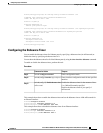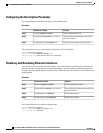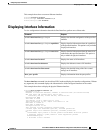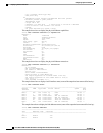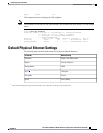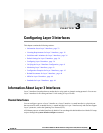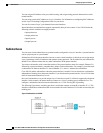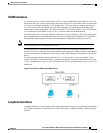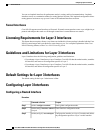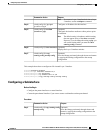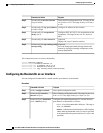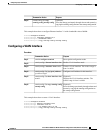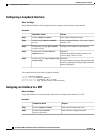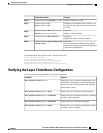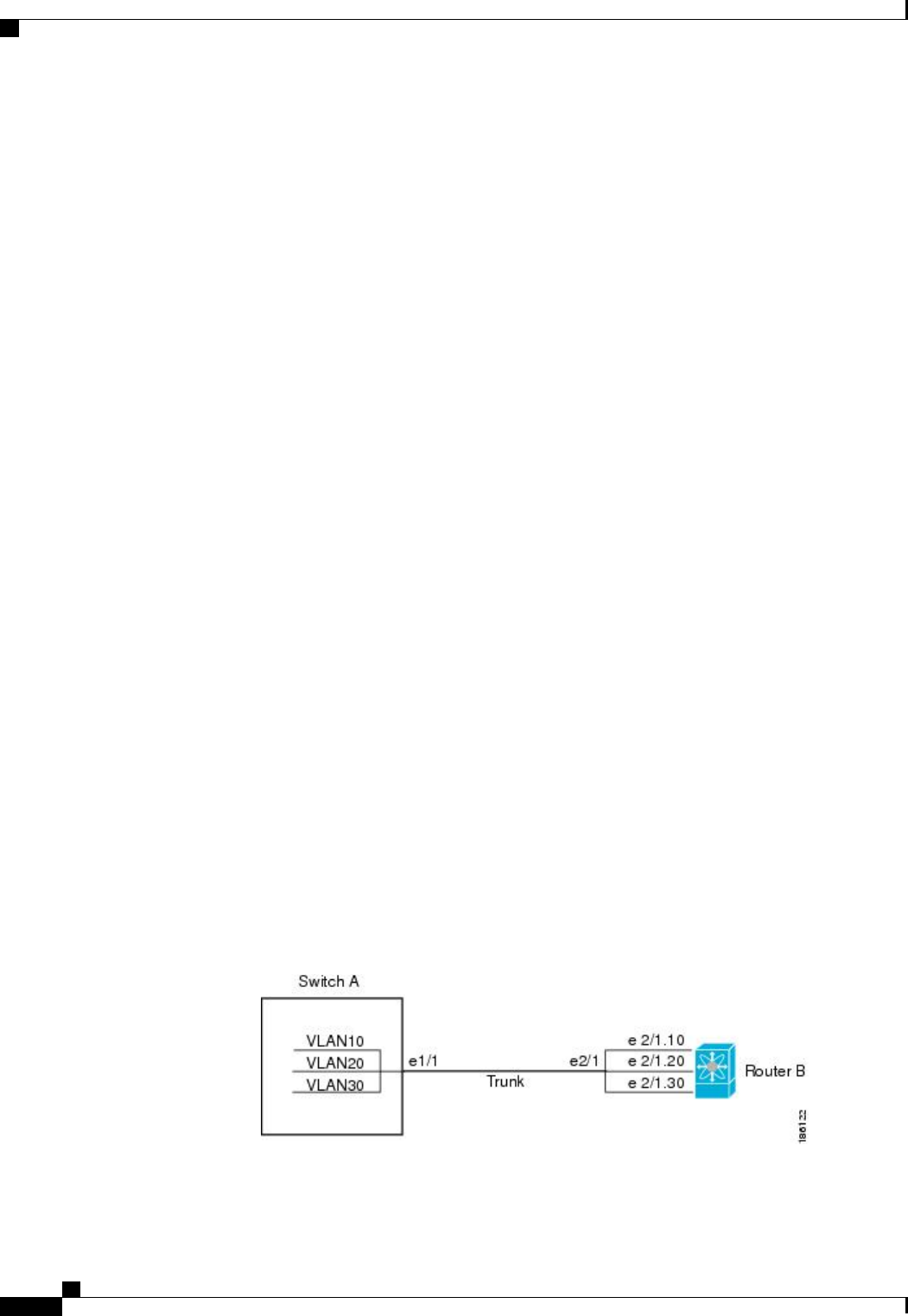
You can assign an IP address to the port, enable routing, and assign routing protocol characteristics to this
routed interface.
You can assign a static MAC address to a Layer 3 interface. For information on configuring MAC addresses,
see the Layer 2 Switching Configuration Guide for your device.
You can also create a Layer 3 port channel from routed interfaces.
Routed interfaces and subinterfaces support exponentially decayed rate counters. Cisco NX-OS tracks the
following statistics with these averaging counters:
• Input packets/sec
• Output packets/sec
• Input bytes/sec
• Output bytes/sec
Subinterfaces
You can create virtual subinterfaces on a parent interface configured as a Layer 3 interface. A parent interface
can be a physical port or a port channel.
Subinterfaces divide the parent interface into two or more virtual interfaces on which you can assign unique
Layer 3 parameters such as IP addresses and dynamic routing protocols. The IP address for each subinterface
should be in a different subnet from any other subinterface on the parent interface.
You create a subinterface with a name that consists of the parent interface name (for example, Ethernet 2/1)
followed by a period and then by a number that is unique for that subinterface. For example, you could create
a subinterface for Ethernet interface 2/1 named Ethernet 2/1.1 where .1 indicates the subinterface.
Cisco NX-OS enables subinterfaces when the parent interface is enabled. You can shut down a subinterface
independent of shutting down the parent interface. If you shut down the parent interface, Cisco NX-OS shuts
down all associated subinterfaces as well.
One use of subinterfaces is to provide unique Layer 3 interfaces to each VLAN that is supported by the parent
interface. In this scenario, the parent interface connects to a Layer 2 trunking port on another device. You
configure a subinterface and associate the subinterface to a VLAN ID using 802.1Q trunking.
The following figure shows a trunking port from a switch that connects to router B on interface E 2/1. This
interface contains three subinterfaces that are associated with each of the three VLANs that are carried by the
trunking port.
Figure 2: Subinterfaces for VLANs
Cisco Nexus 5000 Series NX-OS Interfaces Configuration Guide, Release 5.2(1)N1(1)
34 78-26881-OL
Configuring Layer 3 Interfaces
Subinterfaces




